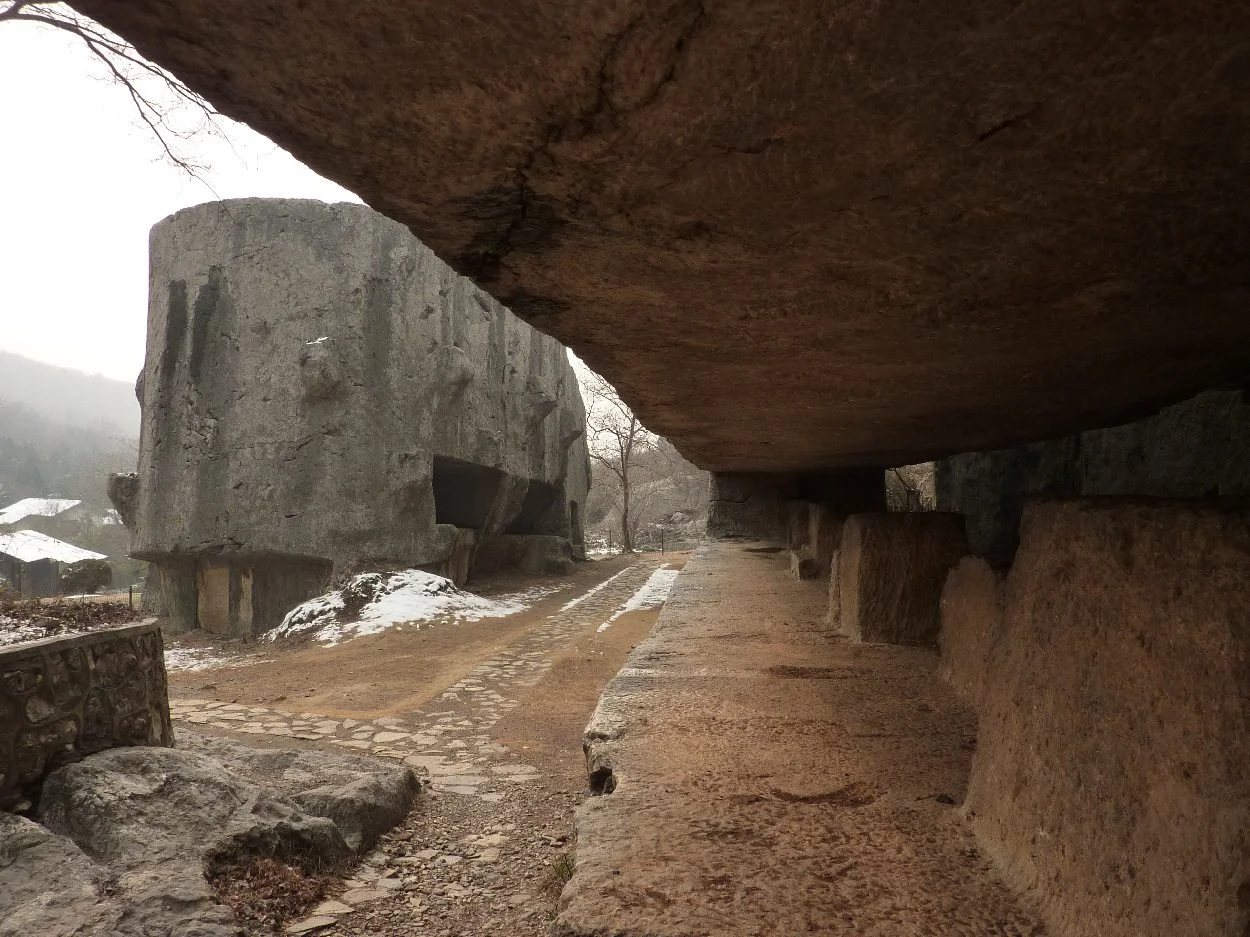The Yangshan Quarry is the site of an ancient limestone quarry, located to the east of Nanjing, China.
The quarry has been active since the Six Dynasties period, a collective term for the six Han Chinese-ruled dynasties that existed from the early third century AD to the late sixth century AD.
Limestone was sourced from the quarry for the construction of buildings and monuments in Nanjing, a city that served as the capital of various Chinese dynasties since it was founded in the fourth century BC.
Most of the quarrying activities at Yangshan took place during the Ming dynasty, when in AD 1368, Zhu Yuanzhang (the Hongwu Emperor), established his capital at Nanjing.
In 1405, Zhu Di (the Yongle Emperor and fourth son of Zhu Yuanzhang), usurped his nephew Zhu Yunwen (the Jianwen Emperor) and took the throne.

Zhu Di was determined to establish his own legitimacy and commissioned several major construction projects, including the Porcelain Tower of Nanjing, the Forbidden City, and a large mausoleum complex known as the Ming Xiaoling for his gather.
He ordered the cutting of a giant stele at the Yangshan Quarry, which would be placed at the mausoleum in dedication of Zhu Yuanzhang.
According to tradition, three thousand craftsmen spent three hundred days carving three stone blocks that formed the stele head (weighing 862 tons), the stele body (weighing 2,617 tons), and the stele base (weighing 6,198 tons).
Upon realising the monumental tasks of transporting the stones from Yangshan to Ming Xiaoling, the project was abandoned in favour of a much smaller stone tablet known as the Shengong Shengde (“Divine Merits and Godly Virtues”).
If the stele had been finished and assembled, then it would have stood 73 metres in height, making the monument the tallest stone structure in China. In 1956, the Yangshan Quarry was entered on the Jiangsu provincial register of protected cultural monuments.
Header Image Credit : Vmenkov – CC BY-SA 3.0
Sources : Nanjing Tour Website





